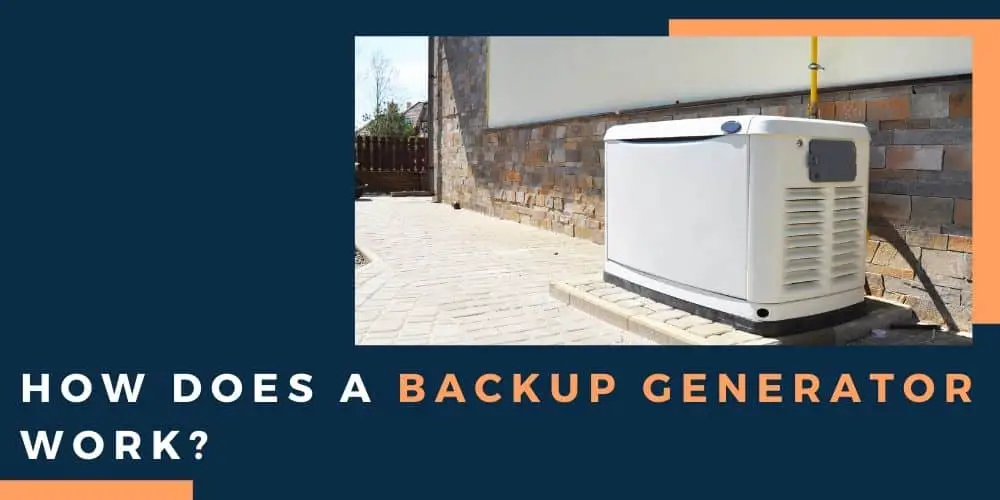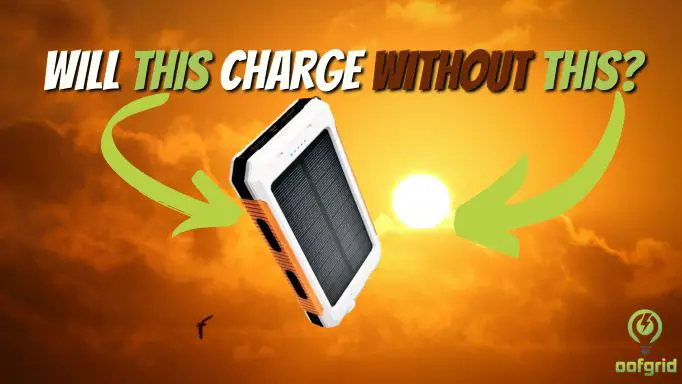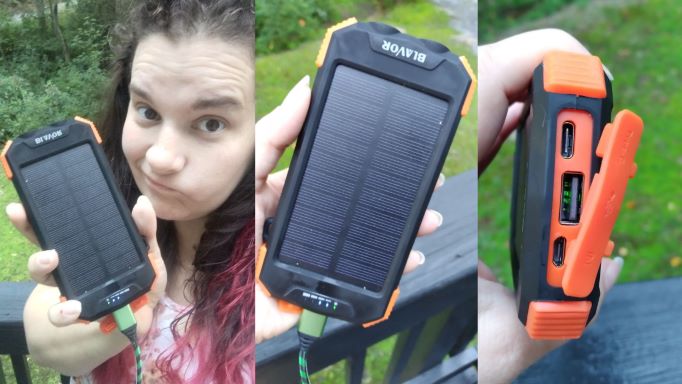No matter how advanced electronic technology and engineering becomes, there is always the risk of your home suffering from a power outage. This is especially true if you live in an area with seasonal storms and heavy downpours of rain as Mother Nature takes hold and wreaks havoc on the main power grid.
Power outages can last anywhere from a couple of hours to several days at a time depending on what’s gone wrong. And this is where a backup generator becomes an essential bit of kit for any home.
But how does a backup generator work? If you’ve been asking yourself this question for a while, look no further – we have the answer! Below, you’ll find all the information you need on how backup generators work, along with a wealth of other useful information.
Contents
Backup Generator VS. Portable Generator
Before we get started, we need to take a look at the difference between a backup generator and a portable generator. This is a subject that is often surrounded by confusion, with many people thinking that they are just different names for the same thing. However, this isn’t true!
Backup generators (also known as standby generators) are designed to be permanently installed on your property, whereas portable generators can be moved from place to place as required. A backup generator will also automatically feed electricity into a building as soon as there is a power outage, whereas a portable generator needs to be connected and started up manually.
This makes backup generators a better option for homes that frequently suffer from power outages.
How does a backup generator work?
As we’ve explained above, a backup generator is connected to your home by a permanently installed automatic or manual transfer switch. This switch monitors the electricity being fed into your home from the local power supply.
In the case of an automatic transfer switch, as soon as a power outage occurs the switch will turn the generator on and a source of backup power will be fed to your home.
It’s a simple case of ‘power goes out, the generator comes on’.

With a manual transfer switch, you need to turn the generator on yourself as soon as there is a power outage. For this reason, automatic backup generators are a preferred option, but in both cases, the backup generator will feed power into your home until it senses the main power supply is available again.
Why might you need a standby generator?
It’s almost impossible to do anything in the home or at work without a reliable supply of electricity available at all times. During a power outage, all electricity being fed into your home is immediately cut off.
While you might be able to go for a few hours without your television or computer for entertainment, there are some things in your home that you might not even think about during a power outage.
Take your refrigerator and freezer, for example. As soon as the electricity supply goes off, the temperatures inside begin to fall. This can lead to food going bad and you may find yourself having to throw a lot of stuff away. You’ll also be faced with an unexpected trip to the grocery store and the expensive cost of replacing it.
Standby generators aren’t only useful in the home though, and they can be an essential purchase for some business. Anywhere that relies on electricity to keep their products fresh or to allow their staff to continue working might see a fall in profits if they encounter a particularly long power outage.
How long can you run a backup generator?
This depends on the model of generator you’re using, but most manufacturers limit the amount of time you can run a backup generator to 2-3 weeks. This is to ensure that you’re not using your generator alongside your mains power supply, resulting in backfeeding which is both dangerous and illegal.

However, 2-3 weeks of continuous running is usually more than enough to keep any home or business running during a particularly long power outage.
What does a backup generator run on?
With no electricity supply available during a power outage, what exactly does a backup generator run on? Again, this depends on the model you’ve gone for, but backup generators are most commonly powered by either diesel, propane, or natural gas.
Diesel and propane backup generators generally require less maintenance and they are renowned for their durability. However, the one drawback to them is that they need to be monitored and topped-up according to their fuel levels. Forget to do this and the generator will stop working as soon as it’s out of fuel.
Gas standby generators are connected to a natural gas supply, so there’s no need to worry about checking their fuel levels. You might think that this makes them easier to maintain, but you’ll need to have them checked every 12 months by a qualified gas engineer. Not doing this can result in potentially fatal consequences.
Final Word
If you find your home or business suffers from power outages on a regular basis, then a backup generator would be a fantastic investment. As they work by automatically sensing when the supply of electricity has gone out, and powering themselves on in the process, you also won’t have to worry about an overnight power outage ruining your food or stock.
The fact that you can get between 2-3 weeks of a continuous power supply from a backup generator is another reason why it’s a good idea to purchase one.
And, while you’re unlikely to ever need to rely on one for that long, having that cover really gives you some extra peace of mind.
However, it’s important to note the difference between an automatic backup generator and one that has a manual switch. If you want ultimate reliability, an automatic transfer switch would be the way forward.
If you’d prefer the sense of security that comes with knowing you’ve switched the generator on yourself, go for a backup generator with a manual transfer switch.






